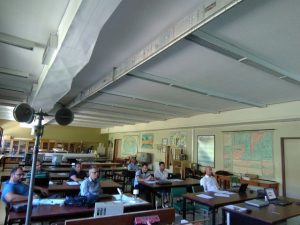i-ALARMS
Ionian-Adriatic earLy wARning Monitoring System
Priority axis
1 - Promotion of the environment, sustainable transport and public infrastructureSpecific objective
1.4 Improve the effectiveness of risk prevention and disaster management with a focus on forest firesBudget
424.148,04€Duration
23 monthsWebsite
http://ialarms.physics.uoi.gr/At a time of global changes, the world is striving to face the new conditions of life, which are significantly related with climate change and natural hazards. A widening of forest wildfires and severe and more frequent floods are already taking place worldwide. Climate change will cause additional environmental stresses and societal crises in regions already vulnerable to natural hazards, poverty and conflicts.
In a recent study of World Bank (2010) it is stated that “hazard early warnings systems are of great benefit because they can save lives and properties. Critical infrastructure reduces loss of life and property during and after a disaster. What is critical however, depends on the situation and the hazard.” Firefighting resource systems (i.e. vehicles, water pumps, etc.) provided assistance on remote forest fighting wildfires, bridges and roads provided evacuation paths and public buildings were used as shelters from extreme weather and floods.
So, investment in these new anti-hazard systems and infrastructures provides ancillary benefits which offer protection from hazards within physical limitations and in general it is cheaper to prevent and protect than to restore. Although it is not always trivial what to protect, evidence on the costs and benefits of disaster risk reduction consistently shows that investment in early warning systems and infrastructures can save lives and prevent property damaging.
The proposed multi-hazard early warning system is considered appropriate for the above purposes, since it can be used by the local authorities and the public as an information tool for pending threats. The issue addressed within the proposed “i-ALARMS” project is centered on the development of an operational tool and the assessment of a unique state-of-the-art Early Warning System (EWS) organized according to the nature of the local bi-lateral natural hazards occurrences. It is based on historical and new hydro-meteorological and fire forest observations and modeling systems.
The weather and fire danger forecasting is one of the most powerful tools in order to manage the prevision and initiate firefighting engagements. Climate changes, especially in the last decade, are accompanied by major hydro-meteorological and fire events, like intense convective storms and wildland fires.
In the SE Adriatic and Ionian areas, intense weather disturbances propagating generally from west to east frequently cause heavy rain and strong winds, which sometimes lead to catastrophic floods, infrastructure damages and other disasters. In addition, the prolonged dryness during the summer along with the existence of dead biomass accumulated in damaged ecosystems increase the risk of forest fires. The above hazards take place usually at the same time in S Albania and NW Greece, since these neighboring areas are characterized by similar weather conditions and variability.
The kick-off meeting of the project has already taken place.




